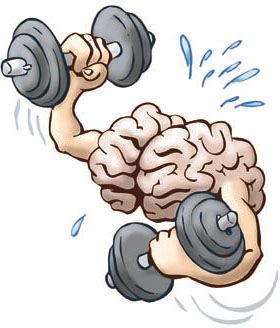30 words that will make you sound smarter
- March 31, 2021
- Posted by: regencyalliance
- Category: News

I had the pleasure of attending a soiree of “young minds” recently, and it was quite interesting, to say the least. I realized that in this city, in this our country, where some of us sit and complain that nothing is happening. ALOT of people are doing ALOT more to BEST their BEST. (That’s me trying to practice what I learnt)….lol
The business train is moving…..NO, the business train is gunning ahead, whether we get on board or not. If you haven’t done a new thing yet this year, if you haven’t picked a new hobby, learnt a new skill, read a new book, taken a new class, joined social media(YES! PICK ONE OUT OF THE MILLION), if you haven’t done anything different this year, UNFORTUNATELY, you have missed out on plenty. FOUTUNATELY, there’s still the rest of the year to play catch up.
One new thing I also noticed, is the BIG word syndrome. I think people are tired of being basic, some people are tired of being regular and are now exploring BIG. The bigger the words you use, the smarter you look and the more people want to associate with you. Please note, if you only associate with basic people, there’s really no need for big words. There is no need to tell the akara seller that you want BEAN CAKE…..who are you fooling?
People were throwing words around, some I understood, some I reacted based on the flow of conversation and some words just flew right over my head. I started to wonder, Do we REALLY need to speak BIG ENGLISH in order to communicate? Or are we trying TOO hard to look smart? Is it about looking smart or being smart? Are we smart or foolish? Do we even look smart?
Let’s get one thing clear right up front: Just randomly using big words so other people think you’re smart isn’t going to work. A 2012 Princeton study found that, it can have the opposite effect but don’t let that discourage you from actually broadening your vocabulary.
Learning a new word here and there—and knowing how to use it effectively—doesn’t just make you appear more intelligent: It will actually make you more intelligent, for real! Recent studies have found a correlation between increasing your vocabulary as an adult and strengthening your brain.
Memorizing a dozen six syllable words will not make you the smartest person in your social circle. Strengthening your vocab is more about having a sincere curiosity and wanting to find new, more creative ways to describe the world around you.
To help you on your quest for greater intelligence, here are 30 words that won’t just make you sound smarter, but just might make you smarter.
- CACOPHONY: A “cacophony” is any loud, unpleasant mixture of sounds. It could be musical instruments, howling dogs, car horns, or even people talking.
- ENNUI: It’s the feeling you get when you’re simultaneously bored and annoyed. You were expecting more, but you got… this! You’re not depressed exactly, but you’d definitely rather be anywhere but here.
- AQUIVER: You’ve got a serious case of the feels, but you’re not sure how to talk about it without saying “the feels”? which means you’re so overcome with emotion that you’re practically trembling.
- UMBRAGE: It means “offense” or “annoyance.” Can you imagine how much more fun fights would be if people responded to insults that hurt their feelings with, “Dear sir, I take umbrage to that comment?”
- NON-SEQUITUR: It’s when the subject in a conversation gets changed without warning, usually abruptly. It’s a nice way of saying, “Have you even been listening to me?” EXAMPLE: “Wait, why did you just bring up astronauts? I thought we were talking about pilots. That was a weird non-sequitur.”
Well, am not in the mood to pen down 30 words, I hope this 5 helps. Remember, the goal is BE SMART not look smart. Have a Prodigious year.
Do you have MOTOR Insurance? Request A Call or Request A Quote today, our customer service agents are waiting. 0700REGENCY

I was looking through some of your content on this internet site and I believe this web site is really instructive!
Continue putting up
Shaft Balancing: A Comprehensive Guide
Welcome to our in-depth exploration of shaft balancing, an essential process for ensuring the efficient operation of rotating machinery. This guide will shed light on the vital aspects of dynamic shaft balancing, detailing its significance and methodology, as well as tools that can facilitate the balancing process, such as the innovative Balanset-1A system.
Understanding Shaft Balancing
Shaft balancing is the process used to eliminate the imbalances in rotating parts, which can lead to excessive vibrations, potential damage, and catastrophic failure. Balancing is broadly categorized into two types: static and dynamic.
Static vs. Dynamic Balancing
Static balance occurs when the center of gravity of a rotor is perfectly aligned with its axis of rotation. When a rotor is at rest and exhibits static imbalance, gravity will pull the heavier side downward. This can usually be corrected by adjusting the mass on the rotor. Static balancing is particularly helpful for narrow, disk-shaped rotors.
Dynamic balancing, however, addresses rotors that are rotating. In this scenario, the rotor may be improperly balanced due to mass distributions that, unlike static balance, affect the rotor in multiple planes. Here, the forces do not cancel out, resulting in vibrations that can lead not only to inefficiency but also to potential machinery failure. Dynamic balancing thus requires precise adjustments to the rotor in two different planes.
Dynamic Shaft Balancing Process
Dynamic shaft balancing involves careful measurement and adjustment. The Balanset-1A, a portable balancing and vibration analysis device, is utilized widely across various industries, including automotive, manufacturing, and energy sectors.
The Balancing Procedure
The procedure for dynamic shaft balancing generally follows a series of steps:
Initial Vibration Measurement: The first step involves measuring the initial vibration of the rotor. This is achieved by mounting vibration sensors on the rotor. These sensors relay data to the Balanset-1A system, which captures the baseline vibration.
Calibration Weight Installation: A known mass, referred to as a calibration weight, is mounted at a designated point on the rotor. This adjustment alters the rotor’s vibration profile, allowing technicians to assess how the additional weight affects the system.
Re-measurement with Calibration Weight: The rotor is set in motion again, and vibrations are measured again to understand the impact of the installed calibration weight on overall balance.
Adjustments and Final Weight Placement: From the data collected, sensors will identify the required corrective measures. Weights are strategically positioned to counteract any detected imbalances. The system is then restarted to verify the effectiveness of the adjustments.
Angle Measurement and Correction
For proper weight adjustments, angle measurement is crucial. The angle is recorded relative to the direction of rotor rotation, indicating where any new corrective weights need to be installed. This precision ensures the right balance is achieved based on the data received by the analyzer.
Calculating Corrective Weights
Corrective weights are calculated based on a formula that accounts for the original rotor mass, installation radius, and speed. This mathematical approach allows technicians to determine the precise weight required to correct any imbalance effectively.
Benefits of Effective Shaft Balancing
The advantages of proper shaft balancing are manifold:
Reduced Vibration: Well-balanced shafts exhibit significantly lower vibration levels, which translates into extended machinery life and better performance.
Improved Efficiency: Balanced shafts operate more smoothly, resulting in less energy loss and enhanced operational efficiency within systems.
Minimized Wear and Tear: By addressing imbalance issues promptly, companies can reduce maintenance costs and avoid unscheduled downtimes.
Enhanced Safety: Keeping machinery in balance lessens the risk of accidents due to severe vibrations or failures, contributing to a safer workplace environment.
Use Cases and Applications
Shaft balancing applies to a multitude of industries where rotating machinery plays a crucial role. The Balanset-1A device is used for balancing a variety of equipment, including:
Centrifuges
Turbines
Fans and blowers
Agri-machinery such as augers and mulchers
Crushers and other types of rotors
Conclusion
Incorporating dynamic shaft balancing within operational practices is key to preserving the integrity of machinery and enhancing productivity. The sophisticated Balanset-1A and the systematic approach to balancing can be transformative for industries reliant on high-precision machinery. Whether for long-term investments in machinery or immediate improvements in efficiency and safety, understanding and implementing shaft balancing techniques is vital. Take the step towards better machinery performance; prioritize dynamic shaft balancing today.